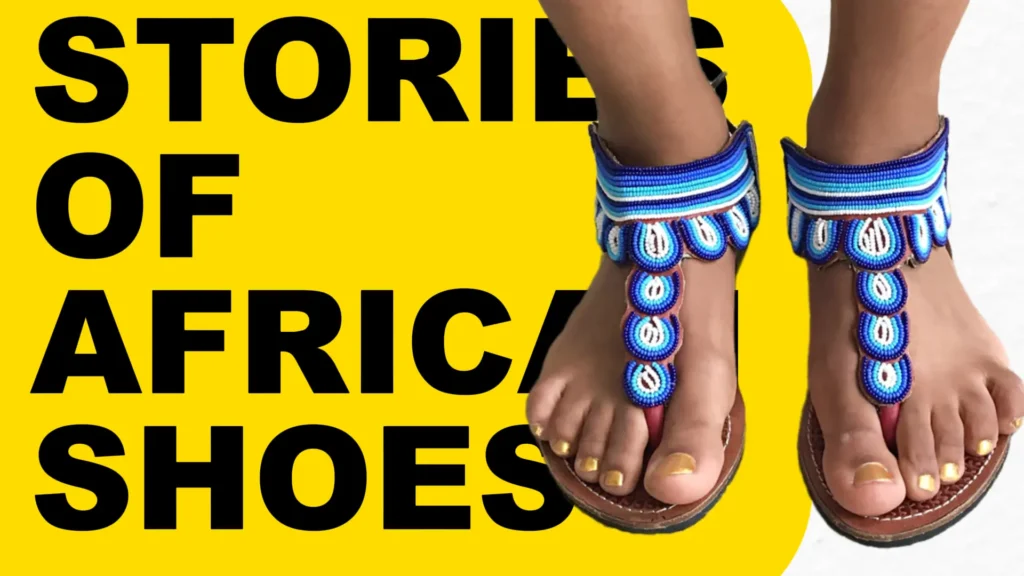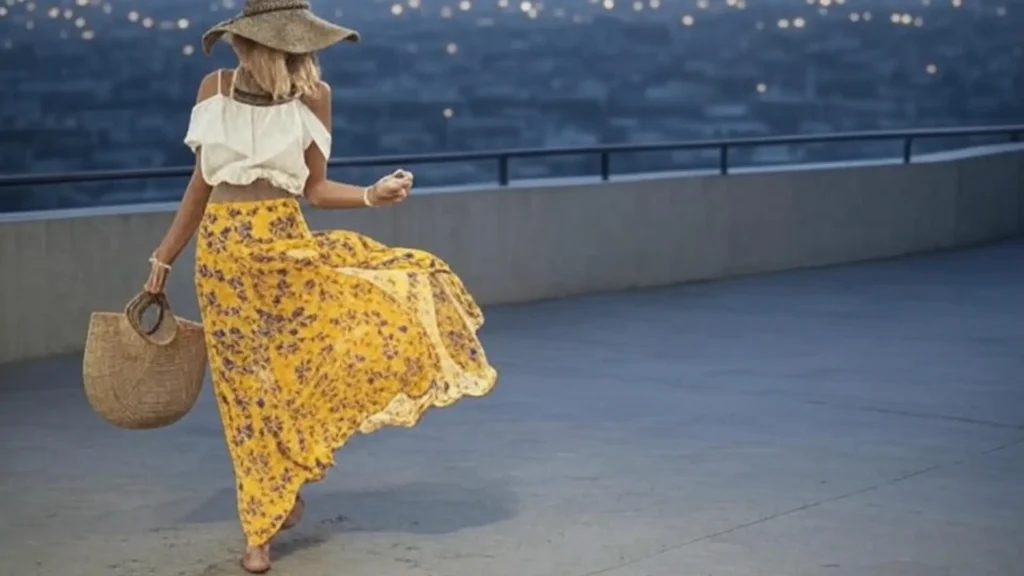Shoes in Africa are far more than functional items; they are profound expressions of culture, history, identity, and resilience. Across the continent’s vast and diverse landscapes, from the deserts of the Sahara to the rainforests of Central Africa and the urban hubs of the south, footwear tells stories of tradition, craftsmanship, adaptation, and innovation.
The Origins: Barefoot Traditions and Early Footwear
In many African societies, particularly in rural and warm climates, going barefoot was a way of life for centuries. This practice was not merely practical—avoiding the need for shoes in hot, dry, or humid environments—but also spiritual.
San people of Southern Africa, walking barefoot connected them to the earth, a sacred bond during hunting and gathering. Similarly, in West African farming communities, bare feet allowed better grip in muddy fields during the rainy season. Yet, as lifestyles evolved, so did the need for protection, leading to the creation of early footwear.
Early African shoes were crafted from locally available materials, reflecting ingenuity and a deep tie to the environment:
Nomadic pastoralists, such as the Maasai of Kenya and Tanzania, used cowhide to create simple, durable sandals. Rawhide, toughened by sun-drying or smoking, protected feet during long treks across rocky savannahs.
In West Africa, the Yoruba and Igbo wove palm fronds, grasses, and bark into lightweight sandals. These breathable designs suited humid, tropical climates, preventing fungal infections in wet conditions.
In Central and West Africa, wooden clogs or platform shoes emerged, especially in swampy or rocky areas. Among the Bamileke of Cameroon, carved wooden sandals elevated feet above mud, often decorated with simple geometric patterns.
In North Africa, Berber tribes used goat and camel hides, softened through tanning, to craft slippers suited for desert travel, protecting against scorching sand.
These early designs were functional, yet their construction hinted at the artistry and cultural values that would define African footwear.
As trade routes expanded—such as the Trans-Saharan networks linking North and West Africa—footwear adapted to new demands. Merchants needed sturdier shoes for long journeys, while urbanizing areas saw a shift from barefoot traditions to protective coverings. This laid the foundation for the diverse styles that would emerge across the continent.
Cultural Significance: Shoes as Symbols
Shoes in African cultures often transcend utility, embodying identity, status, and spirituality. Each design carries a story, tied to rituals, social roles, and heritage.
The Maasai, a semi-nomadic people of East Africa, are renowned for their “enkipaa” sandals. Crafted from cowhide, these are adorned with intricate beadwork in vibrant colors:
Red beads signify strength and warriorhood, blue represents wisdom and age, white denotes purity, and green symbolizes prosperity. A young warrior’s sandals, for instance, might feature bold red patterns, while an elder’s include blue and white.
These sandals are central to ceremonies—worn by young men during circumcision rituals marking adulthood, or by brides in marriage celebrations. The beadwork, often crafted by women, tells personal and communal stories, preserving history in every stitch.
Designed for the rugged terrain of the Rift Valley, they reflect the Maasai’s resilience, enduring long walks to herd cattle.
Among the Akan people of Ghana, footwear is a mark of prestige, especially for royalty:
Ahenema sandals ornate leather sandals, called “ahenema,” are reserved for chiefs, queen mothers, and nobles. Embellished with gold leaf, beads, and embroidery, they pair with kente cloth, a richly woven textile, during coronations, funerals, and festivals.
The sandals elevate the wearer—literally and figuratively—signifying authority and divine connection. Gold accents tie to the Akan belief in wealth and spiritual power, rooted in their gold-rich history.
Artisans, often trained from childhood, hand-stitch each pair, a process steeped in tradition and reverence.
The Zulu people of South Africa weave history into their footwear:
Zulu shoes and sandals feature intricate geometric patterns in glass beads, a craft perfected over generations. Designs might represent family lineage, community unity, or resistance to oppression.
During apartheid (1948–1994), beaded crafts, including shoes, became a quiet act of defiance, preserving Zulu identity against cultural erasure. Women, the primary beadworkers, embedded stories of struggle and hope.
Today, beaded sandals are worn at weddings, initiations, and cultural events, blending tradition with contemporary style.
In some cultures, shoes carry spiritual weight. Among the Yoruba of Nigeria, certain sandals are worn by priests during Ifa divination rituals, believed to ground them to ancestral spirits.
In contrast, removing shoes is a sign of respect—entering a mosque in North Africa or a sacred grove in Benin requires bare feet.
Craftsmanship and Trade: A Legacy of Skill
Shoemaking in Africa is an artisanal tradition, handed down through families and communities, often tied to trade and economic networks.
In North Africa, the babouche slipper is a hallmark of Moroccan craftsmanship:
These pointed, flat slippers, made of soft leather, are dyed in vivid hues—saffron yellow, ruby red, or jet black. The heel is often folded down for ease, a practical feature for frequent removal in homes and mosques.
In the medinas of Fez and Marrakech, tanners and stitchers work in tanneries, using age-old methods—soaking hides in lime, dyeing with saffron or henna, and hand-stitching with precision.
Historically, babouche traveled the Trans-Saharan trade routes, exchanged for salt, gold, and spices, linking Morocco to Mali and beyond. Today, they’re a global symbol of Moroccan style.
The Hausa people of Northern Nigeria are leatherworking masters:
They tan hides with acacia pods and dye them in rich reds, greens, and blacks using natural extracts. Shoes range from simple sandals to elaborate slippers with embossed patterns.
Hausa leather goods, including footwear, were prized in West African markets, reaching Timbuktu and the Middle East via medieval trade. This legacy continues in Kano’s bustling markets.
Shoes often mark status—elaborate designs for emirs, simpler ones for everyday use, reflecting social hierarchy.
Ethiopia blends materials in unique ways:
In Addis Ababa’s Merkato, one of Africa’s largest markets, artisans combine tanned leather soles with woven cotton or sisal uppers, creating breathable, durable sandals.
Rooted in the Amhara and Oromo traditions, these designs suit Ethiopia’s highlands, protecting against rough terrain while allowing airflow.
Modern cobblers add colorful threads or minimalist styles, catering to tourists and locals alike.
Across Africa, shoemaking is taught through apprenticeship. In Senegal, Wolof craftsmen train youths in leather cutting and stitching. In Rwanda, cooperatives teach women to craft sandals, blending economic empowerment with cultural preservation. This passing of knowledge ensures skills endure.
Colonial Influence and Adaptation
Colonialism, from the 19th to mid-20th centuries, reshaped African footwear, but communities adapted with creativity.
European colonizers brought laced boots, oxfords, and loafers, often worn by administrators and missionaries. These were initially elite items, adopted by urban Africans educated in colonial schools or working in Nairobi, Accra, and Cape Town.
A remarkable adaptation emerged from necessity:
In East Africa, particularly Kenya, recycled car tires became “akala” sandals. Durable and cheap, they suited laborers, farmers, and pastoralists navigating rough roads or fields.
In Ghana and Nigeria, tire sandals, called “chalewote,” gained popularity, with artisans cutting precise strips for comfort and traction.
This recycling reflected resilience, turning industrial waste into a cultural staple during economic hardship post-colonization.
In growing cities, cobblers blended styles:
In Lagos, leather loafers gained bright Ankara fabric panels. In Johannesburg, boots incorporated beadwork or colorful stitching, merging European forms with African aesthetics.
These shoes marked a rising middle class, worn to offices, churches, and social events, balancing colonial influence with local pride.
During colonial rule, traditional shoemaking persisted as resistance. In Algeria, Berber artisans continued crafting babouche despite French pressure, preserving identity. Similarly, in Zimbabwe, Shona craftsmen maintained leather sandal traditions, a quiet rebellion against cultural suppression.
Modern African Shoes: Fashion and Innovation
Today, African footwear is redefining global fashion by seamlessly bridging heritage and modernity. Designers across the continent are blending traditional craftsmanship with contemporary aesthetics, creating shoes that resonate both locally and internationally.
From Nigeria’s vibrant Aso-Oke sneakers to South Africa’s rugged yet stylish desert boots, African footwear is gaining recognition for its innovation, cultural richness, and sustainability. These designs not only celebrate African identity but also challenge the global fashion industry to embrace ethical production and authentic storytelling.
In Nigeria, designers are reimagining traditional textiles in modern footwear, with Aso-Oke—a handwoven Yoruba fabric—taking center stage. Known for its vibrant colors and intricate patterns, Aso-Oke has long been used in ceremonial attire, but Shekudo are transforming it into stylish sneakers.
These shoes merge cultural heritage with streetwear appeal, making them a favorite among Nigeria’s fashion-forward youth and the diaspora. Worn at major fashion events, including Lagos Fashion Week, Aso-Oke sneakers have become a symbol of pride, proving that tradition can thrive in modern design.
By integrating this centuries-old fabric into everyday footwear, designers are preserving craftsmanship while ensuring its relevance in today’s global fashion scene.
South Africa’s contribution to modern footwear comes in the form of the veldskoen (or “vellies”), a durable leather boot with roots in indigenous Khoisan and Afrikaner history. Originally designed for farmers and trekkers navigating rough terrain, the veldskoen’s simple yet sturdy construction has made it a timeless classic.
Today, Veldskoen Shoes are reinterpreting this iconic boot with contemporary twists—sleek silhouettes, bold colors, and eco-conscious materials—while maintaining its rugged essence. Exported to Europe and the U.S., these boots have gained a cult following among travelers and urban adventurers. More than just footwear, they represent South Africa’s resilience and adaptability, honoring the past while stepping confidently into the future.
Sustainability is at the heart of Africa’s footwear revolution, with brands prioritizing ethical production and eco-friendly materials. In Kenya, Enda has made waves with its locally manufactured running shoes, crafted from recycled plastics and designed to support athletes while reducing environmental waste.
Meanwhile, Ghana’s Horseman Shoes combines traditional hand-stitched leatherwork with sustainable tanning methods, producing elegant loafers and sandals that appeal to conscious consumers. These brands are not only creating high-quality products but also fostering economic growth by employing local artisans and using responsibly sourced materials.
As global demand for ethical fashion grows, African shoemakers are leading the charge, proving that style and sustainability can go hand in hand.
From Lagos to Cape Town, African footwear is carving out a unique space in the fashion world—one that honors tradition, embraces innovation, and champions sustainability. As these designs continue to gain international acclaim, they challenge the industry to rethink its approach to cultural representation and environmental responsibility, setting a new standard for fashion with purpose.
The stories behind African shoes weave a rich narrative of ingenuity, culture, and resilience. From the barefoot traditions of ancient times to the beaded sandals of the Maasai, the royal ahenema of the Akan, and the innovative tire sandals of the 20th century, footwear reflects Africa’s diversity. African shoes are not just objects; they are testaments to a continent’s spirit, walking paths of tradition, struggle, and triumph.




